





GENERAL FEATURES & FUNCTIONS
The Nervous tissue will be studied in more detail later on.
The nervous system accomplishes three functions that enable it to regulate
and control the body functions:
- it constantly monitors changes occurring both inside and outside of the body;
- it processes and interprets information and makes decisions about
what should be done at each moment
- it carries the order of what should be done to muscles and glands.
What are the histological characteristics of the NERVOUS TISSUE?
- It is made of many cells packed closely together (there is little extracellular material between cells);
- Most of the cells are strongly branching
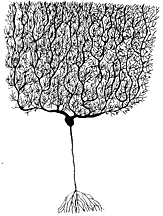
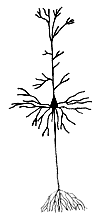
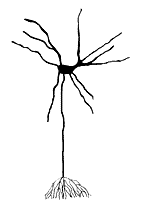

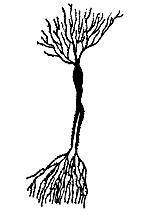
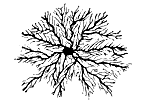
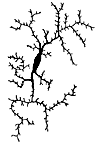
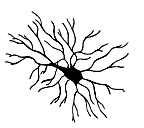
- There are two main groups of cells:
- - the NEURONS - they respond to stimuli - they
conduct electrical impulses to and from all body
organs and from one area of the Central nervous System to another -
they are made of a cell body (containing the nuclei and most of the organelles)
and of cytoplasmic ramifications: the dendrites that receive stimuli
and the axon that generates nerve impulses and transmit them from
one part of the body to another.
- - the GLIAL CELLS - (neurons' "little maids")
which support, protect and bind neurons.
Where do you find NERVOUS TISSUE?:
- the brain
- the spinal cord
- the nerves and their associated ganglia.
We will study the nervous tissue in more detail in the tutorial on the "NERVOUS SYSTEM".
For now, I just want you to be able to identify it when you see it
and to give me its possible locations in the body.










